Studio blog #1: This is Fine - Tracking Drums
Hey Steemit, here sits our first blog on recording The Sex Guys EP. This week we have been tracking drums for our track 'This Is Fine' and throughout this blog i will go through some of the techniques and tricks we used to produce the sounds we wanted and hopefully teach you guys something along the way. Feel free to leave any questions in the comments =)
Drums: Probably the hardest piece of an ensemble to record. When you record an instrument live using mics you have to understand that the room you are recording in becomes part of the instrument. if your room isnt treated well, or even just the instrument being positioned in the wrong place in your room can cause you issues later in the mixing process. so before you start its always a good idea to work out what the best area acoustically is for your instrument.
Not everyone has pro level facilities to use or the funds to rent some so just having a basic understanding can save you a lot of time and money. we chose to set up in the corner of the room facing to the center. we have put up sheets and different diffusing materiel around the room to deaden the sound as best we can (we shall delve into this further in a later blog).
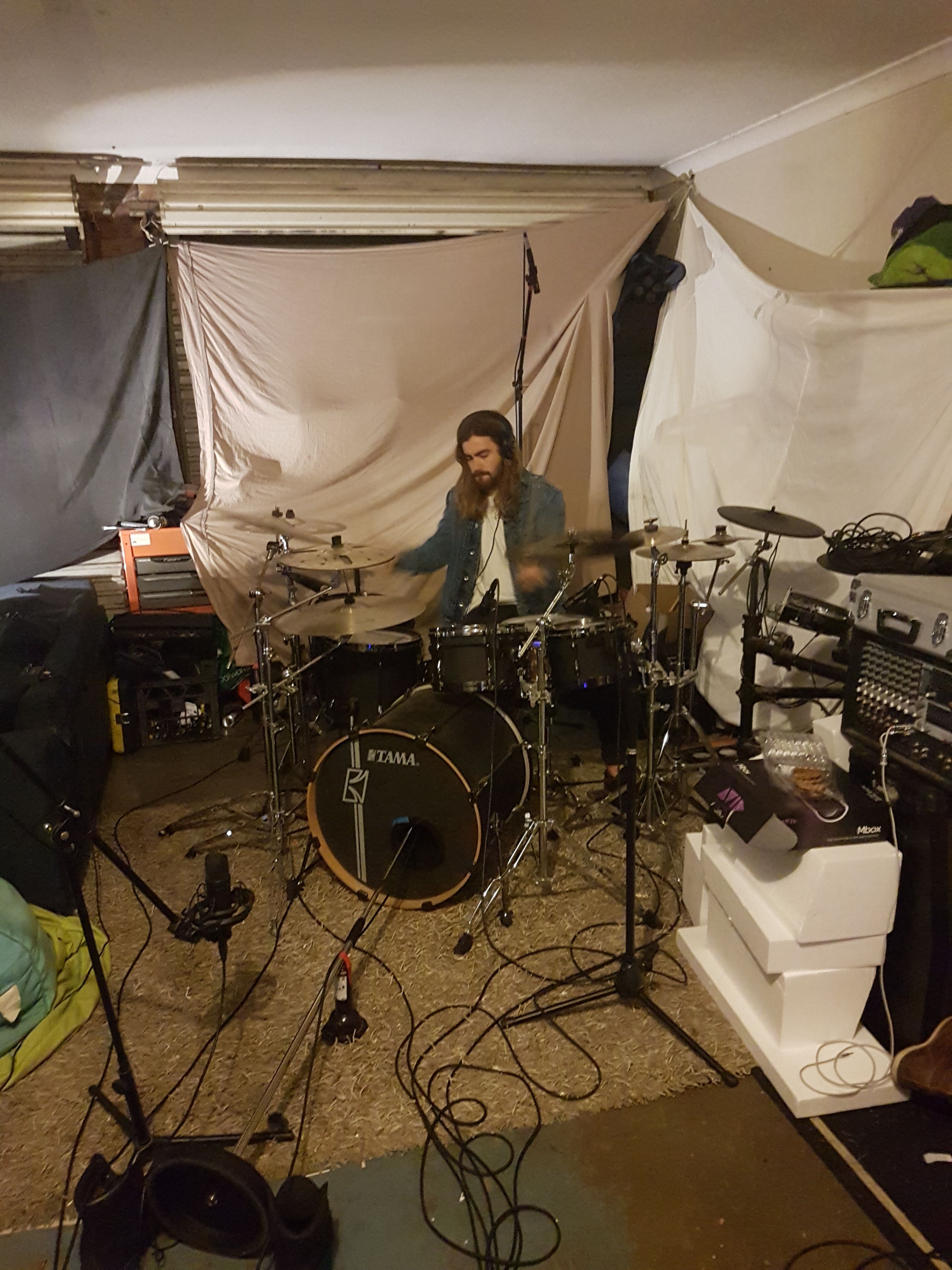
For this we Recording we used an 8 mic set up through a Presonus 1818VSL. Its a really affordable interface for the flexibility it gives. Routed as follows:
1: kick
2: Snare
3: Hi tom
4: Mid tom
5: Low tom
6: Overhead Center
7: Overhead Left
8: Room mic
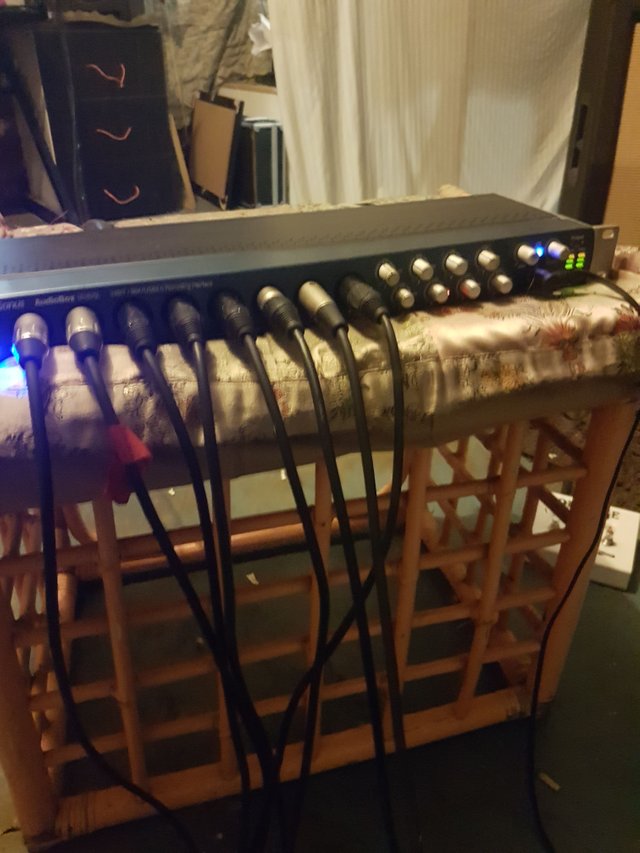
We have used to the Glyn Johns Method for mic placement shown to us by Gold Coast band Liquid Face. This method is typically used when studios are short on mics as it only requires about 5 mics to pull it off well, but we added 3 toms mics for a bit on juiciness ;)
This concept is based around placing one of your overhead mic in the center of the kit form behind the drum stool- facing down at the snare. the second overhead however is positioned just behind the floor tom at around the same height as the cymbals and facing into the snare at the same distance as the center overhead. This will achieve a nice wide sound but to push it up to 11, you rotate the pan in the post mix. Meaning that you take the center overhead and pan it way over to the left and leave the right hand overhead in the middle (as it has created its own pan from the placement), Check phase and bam! Full sounding kit.

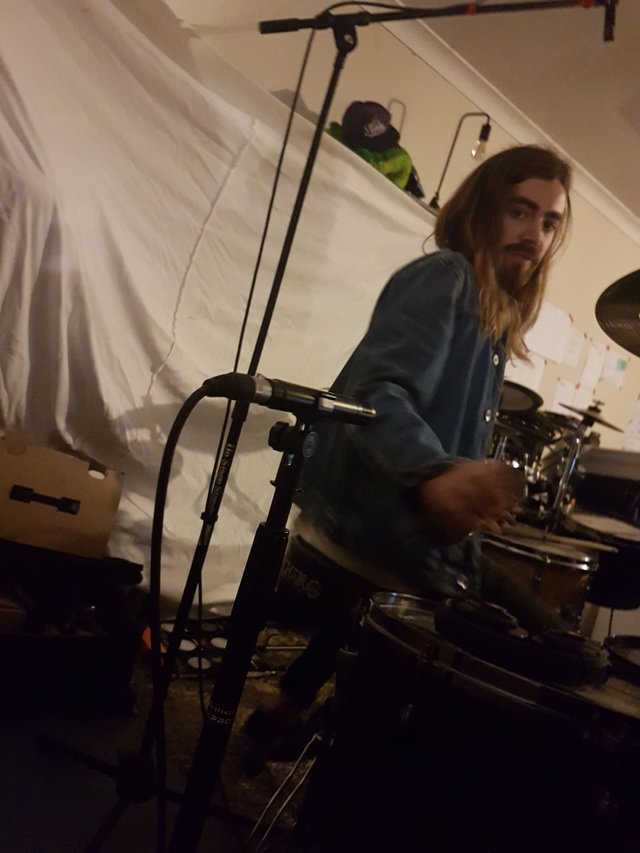
Although we are doing this production full DIY, we are using a number of high quality studio mics which will always improve your sound no matter what room you are in. We are using a Full Audix set including Di5 snare mic, 2x D2 tom mics, D4 tom mic, D6 Kick mic, 2x ADX 51 Overheads and a Rhode NT1 for the room mic. With that said. We did wing a few little cookups to get the sounds we needed. We found that we didnt like the sound of the kick with the mic sitting outside the bass drum. to get it about 2/3 the way in we jerry'd up a mic stand taped to a car jack to get the correct angle for the mic to sit inside. Only downside was the mic stand, although it was durable and had the ability to dampen floor vibration to it, The base is round and we had it on its side which meant rolling around. Solution? A pair of boots and a book.
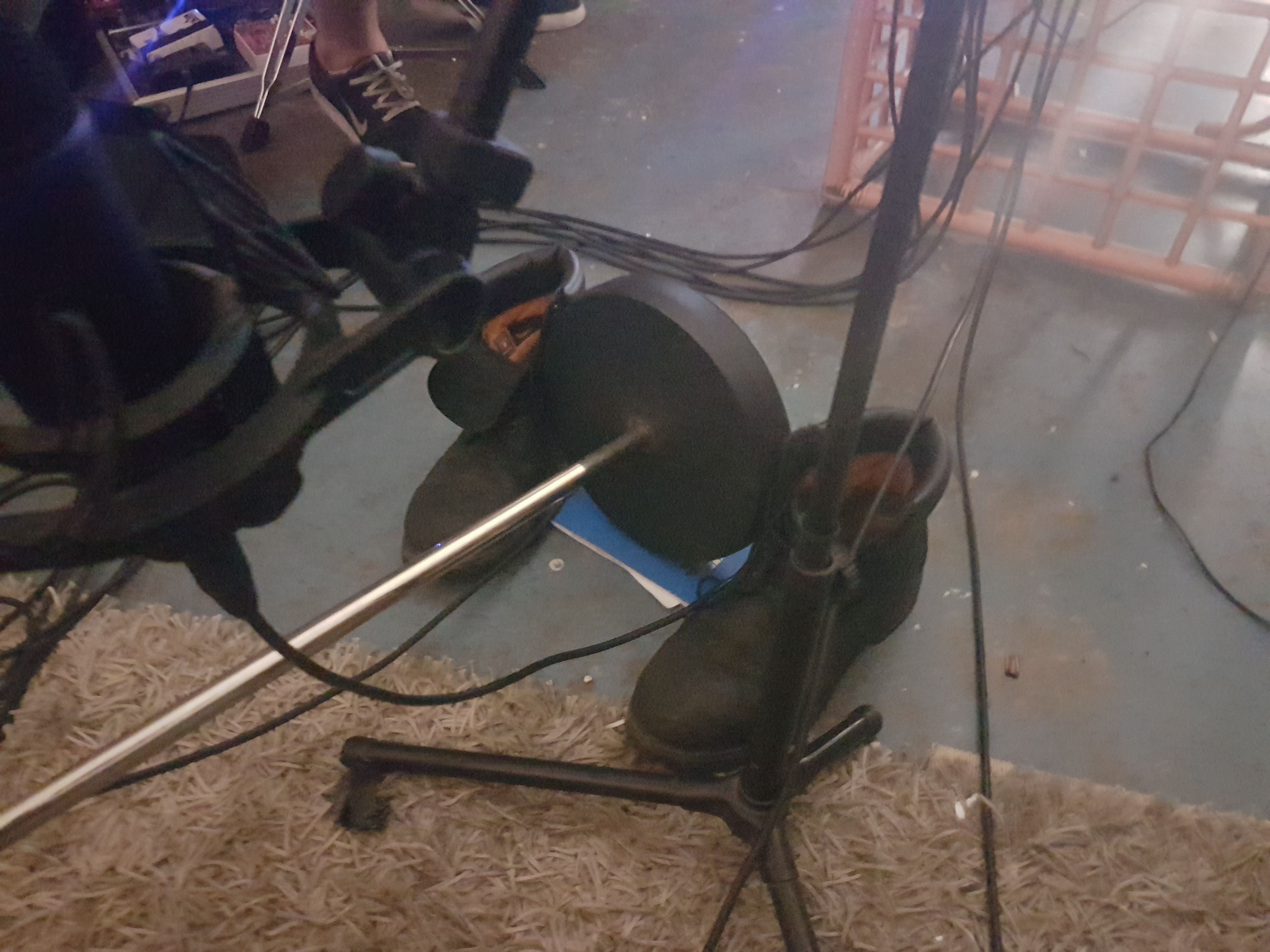
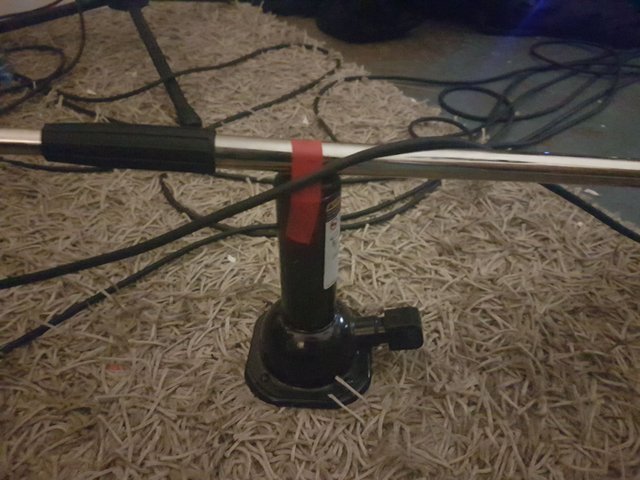
The problem with recording drums in a one room garage is that your 'Sound Desk' and instruments are pretty much right on top of each other. We have been using a 3 person system to get around this. 1 person behind the desk, 1 behind the instrument. and a 3rd person the mediate etween the two. This person is hearing what is coming through the headphones and relaying it back to the engineer or talent for what needs to happen. It is not the most efficient way to work but if you have a spare set of hands and trust everyone involved its cheap as fuck!! We Devised a set of hand signals to queue the talent to parts he was unsure of.
Our drummer Geordie being directed by Jamie
Heres a couple of quick tips to keep your drum tracking running smoothly and time efficient:
Make sure the talent KNOWS THE FUCKING SONGS!
in our case it is the the actual drummer for our band so he was quite aware of how the song is meant to flow and what he needed to do to achieve. However calling in a favor or a studio muso could end up being really time consuming as they have to grasp the idea of the song conceptually pretty much on the fly whilst trying to work out parts. This WILL lead to less exctiing takes and sub par fills.Set up gear prior!
So important. the last thing you want is your talent rocking up warmed up ready to go and then you as the engineer have to spend an hour and a half setting up mic stands and testing levels. fair enough if you are waiting for them to bring a drum kit but get as much done as you can. Set up the project file, rout the mics, get a general idea for levels and position. An hour and a half is a long time to wait and musicians get all tired and stoned if you leave em too long.Have a meal plan
Yeah this always gets overlooked, and most think it is stupid, but drums use a lot of energy. if your drummer needs to hit maccas every 2 hours you are gonna lose a lot of time and quality as bad food wont fuel you properly. have healthy food ready to go. do everyone a favor and save em some time. tinned tuna is quick, easy, nutritional and again QUICK!Take a 10 minute break every 50 minutes.
It keeps everyone at a good level and stops the work-induced 'bitchiness' that comes along with being stuck in a room with the same dudes for long periods of time.Have a good team
Its hard running the show all by yourself. you don't have a cape, your not a super hero, get some like minded people on board that are willing to learn or teach.
We have Tracked Everything in Ableton Live9.0. Yes pretty much everyone will tell you to use Protools or Cubase but to them i say: All Daws are capable of Pro level production, its how you use it, and to me Ableton has good functionality and moves like water. Super fluid and streamlined. especially if you are making the song up as you go, like a lot of electronic producers.
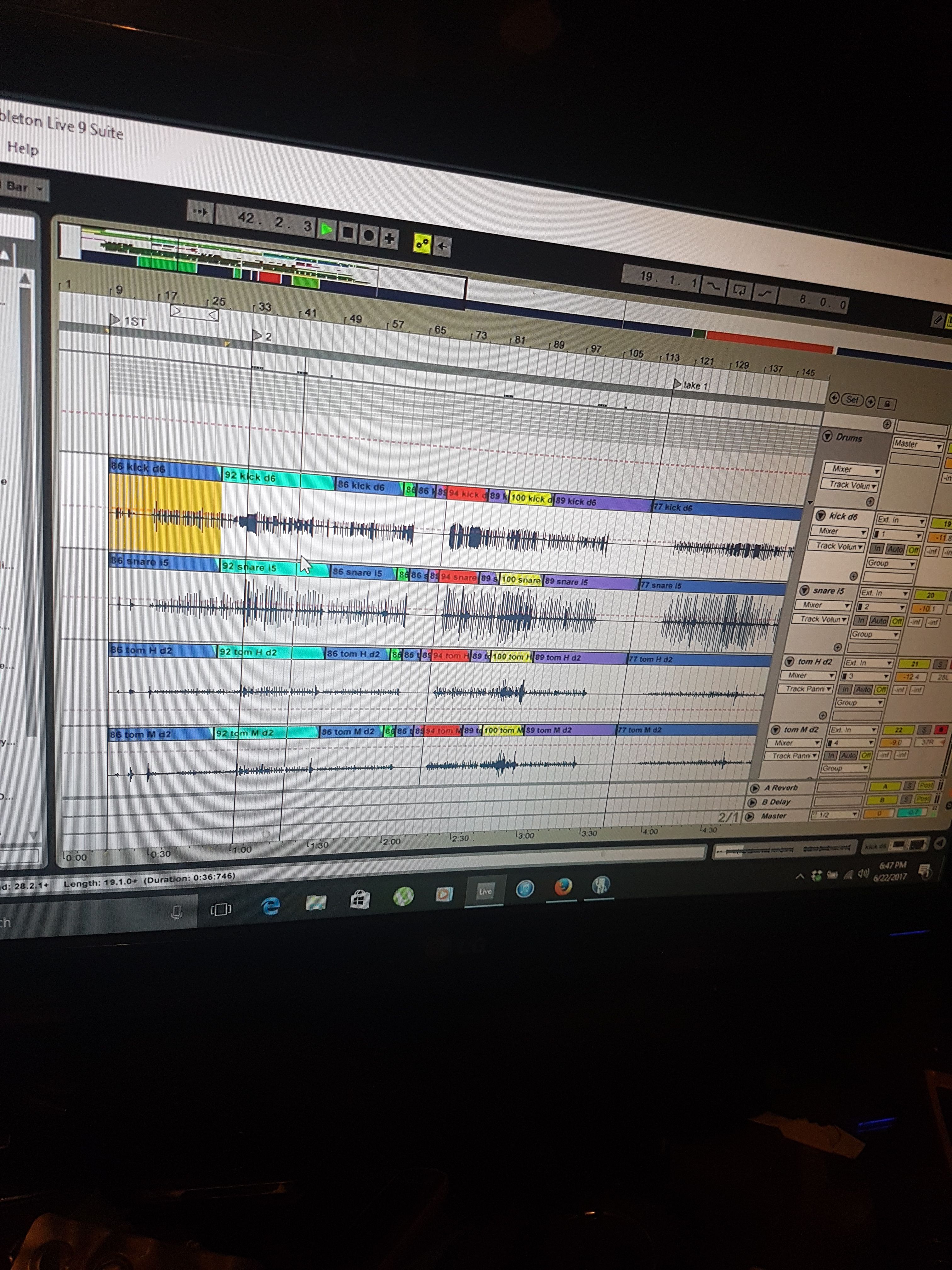
All in all we spent about 5 hours recording one song. The final takes turned out great and has built a solid foundation to start crafting the rest of the song around. I find it is always best to record drums first and work around them with the other instruments. Next week we will go through how we tracked the bass and guitars and we shall look at some of the mixing techniques involved.
I hope this has been Helpful. If this wast technical enough, let us know and we will get more technical =)
Enjoyourself,
Treeborn.
The Sex Guys
Really sweet post, I especially like the Drum Sampling. Haha, organization in a band is not easy ! I would be honored if you'd checked my guitar's artwork
Cheers from Switzerland!
@troilo Thanks bud glad you enjoyed it. Yeah we will check out your guitar art for sure!!!!
Awesome post dude, showing the world how to sound ballin' on a budget
thanks @jayvx , appreciate the love =)